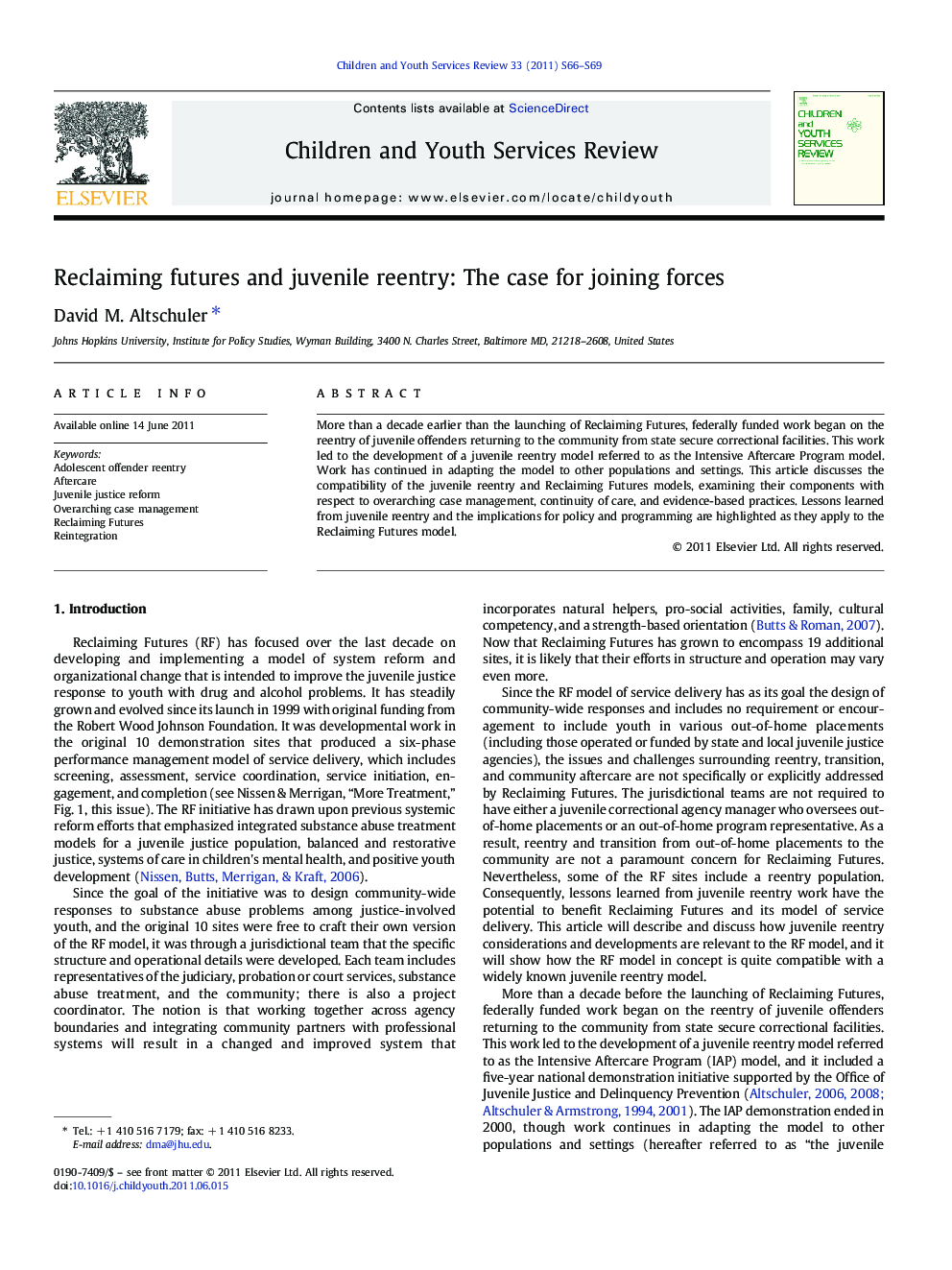| Article ID | Journal | Published Year | Pages | File Type |
|---|---|---|---|---|
| 347486 | Children and Youth Services Review | 2011 | 4 Pages |
More than a decade earlier than the launching of Reclaiming Futures, federally funded work began on the reentry of juvenile offenders returning to the community from state secure correctional facilities. This work led to the development of a juvenile reentry model referred to as the Intensive Aftercare Program model. Work has continued in adapting the model to other populations and settings. This article discusses the compatibility of the juvenile reentry and Reclaiming Futures models, examining their components with respect to overarching case management, continuity of care, and evidence-based practices. Lessons learned from juvenile reentry and the implications for policy and programming are highlighted as they apply to the Reclaiming Futures model.
► Facility and community-based staff need to work in teams during the entire pre-release period. ► Agreed-upon cognitive-behavioral benchmarks that incorporate similar techniques should be used during the pre- and post-release period. ► Focusing too much supervision on lower risk for reoffending youth can produce unsuccessful outcomes. ► Absconding in the absence of other antisocial conduct or delinquency is not the same as recidivism.
